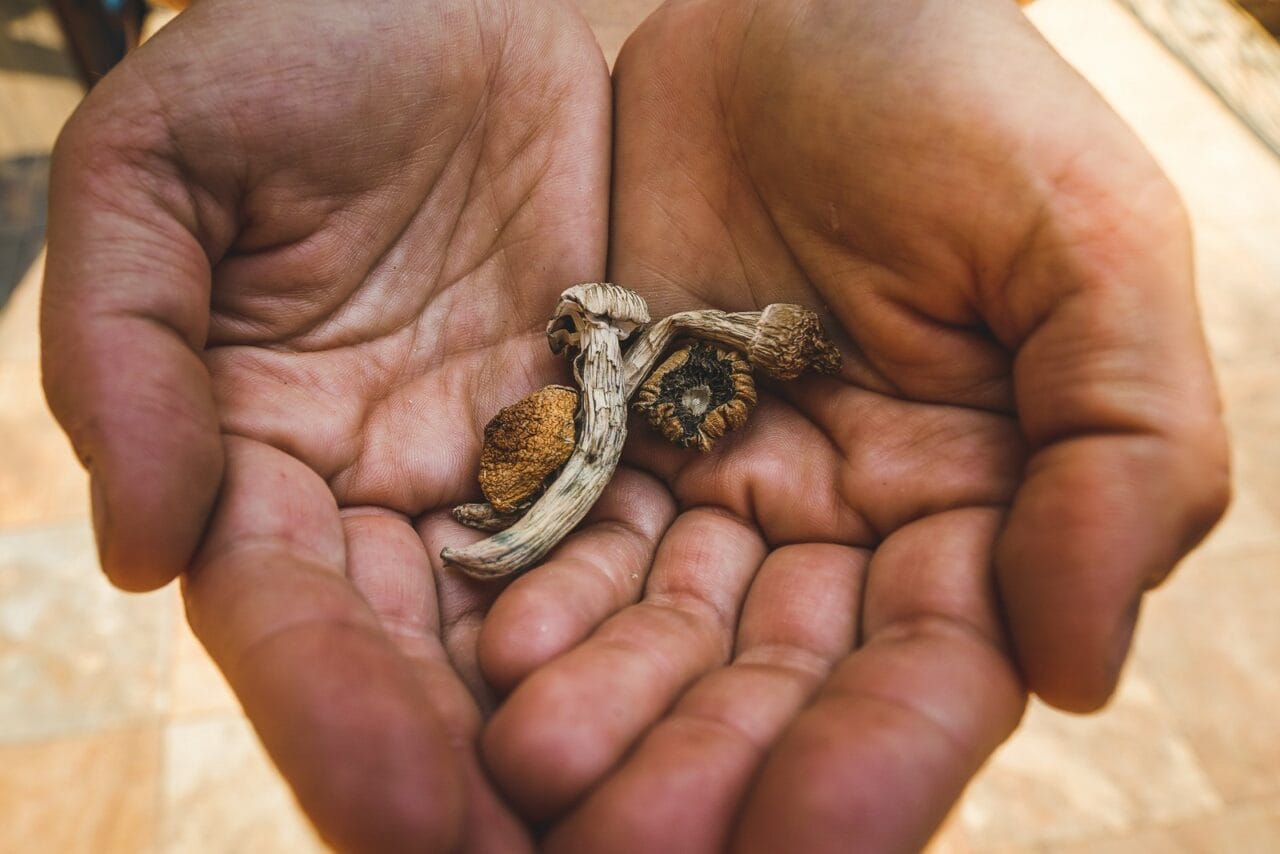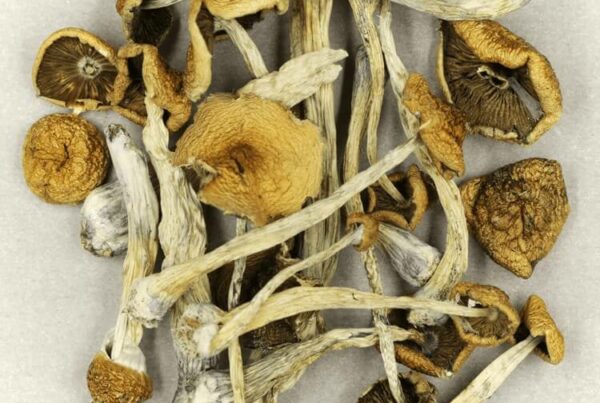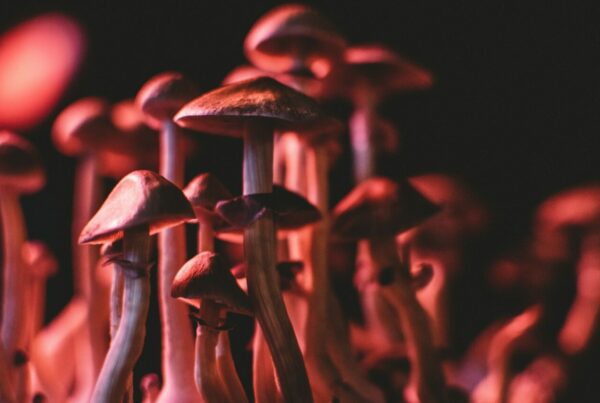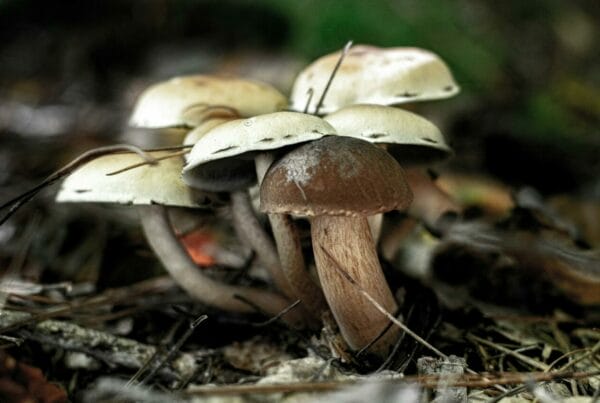Dried shrooms are one of the most sought-after psychedelics available today. If you’ve heard about them and are considering trying them, but you’re uncertain if they’re the appropriate choice for you, read on.
Beginners often find it challenging to select their first psychedelic substance. We’re here to discuss the unique properties of dried mushrooms compared to other psychedelics, and why they could be an excellent choice for your initial psychedelic experience.
[toc]Key Points to Remember:
- The main component of Psilocybe, being the most studied psychedelic for mental health due to its safety, low potential for misuse, and transitory effects.
- The most common variant is dried Psilocybe, which retains its potency and has a longer shelf life.
- Psilocybin activates the serotonin 5-HT2A receptor, leading to enhanced perception, vivid imagery, complex hallucinations, and time distortions.
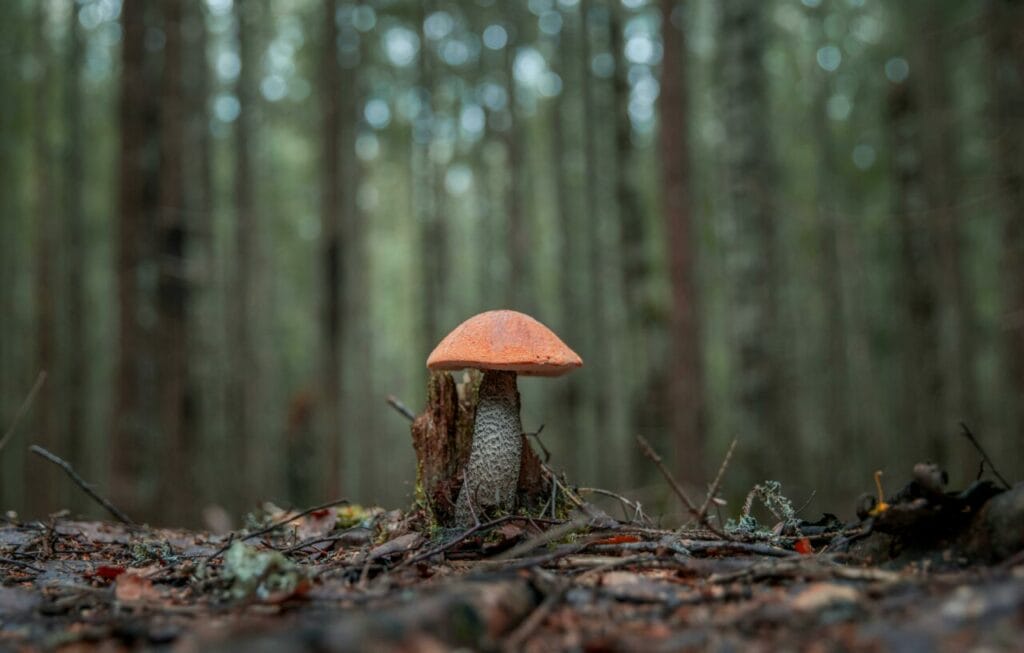
Psilocybin Mushrooms: An Exploration of the Psychedelic Fungus Realm
Psilocybin mushrooms contain the psychoactive compounds psilocybin and psilocin, responsible for the hallucinogenic effects users experience. The most widely known species—Psilocybe cubensis—has a light brown cap, dark spots, and a distinctive shape. Many other species within the Psilocybe genus also produce these compounds.
We advise against picking mushrooms due to the existence of certain toxic mushrooms that resemble Psilocybe and contain harmful toxins.
In the past, mushrooms played a vital role in Central American spiritual rituals. Nowadays, they are being studied for their potential use in treating mental health disorders, including substance abuse issues.
Preparation and Preservation: The Dried Variant
The most common form of Psilocybe available is the dried type. Dehydration is key to preserving potency and extending shelf life. Fresh mushrooms are usually dried using a food dehydrator or placed on a wire rack in a cool, dry area.
The drying process is vital for removing excess moisture, which helps to prevent mold and bacteria growth, thereby ensuring longevity and safety.
Drying magic mushrooms effectively prevents moisture accumulation, which may encourage mould development and deteriorate their active compounds. Once dried, these mushrooms can be stored for future use.
Below is a comprehensive step-by-step guide on the drying and preservation of magic mushrooms:
- Use a suitable food dehydrator or a wire rack to thoroughly dry the mushrooms.
- Transfer them into airtight containers for potency retention and protection against excessive moisture.
- Store them in a location that is both cool and dry to maintain their psychoactive characteristics.
- Avoid exposing them to direct sunlight to prevent deterioration.
- Regularly inspect for any signs of spoilage such as mould or dark spots.
How Psilocybe Cubensis Compares to Other Psychedelics
In addition to dried mushroom products, there are various other psychedelic products available online. These have diverse effects on the body and can be ingested in several ways. Some of these substances are categorized as traditional hallucinogens, much like psilocybin.
| Substance | Origin | Physical Effects | Research Indications | Duration |
| Psilocybin | Occurs naturally in over 200 mushroom species | Heightened perception, hallucinations, altered temporal awareness | Depression, Anxiety, PTSD, OCD, Cluster headaches, Alzheimer’s disease | 4-6 hours |
| DMT | Naturally exists in plants such as Psychotria viridis | Intense spiritual experiences, visions, auditory hallucinations | Depression, Addiction | 15-30 minutes |
| LSD | Synthetic, first manufactured by Albert Hofmann in 1938 | Intensified emotions, changed perception, auditory and visual hallucinations | Depression, Anxiety, Addiction, Cluster headaches, Alzheimer’s disease, Tourette’s syndrome, ADHD | 8-12 hours |
| MDMA | Synthetic, initially synthesized by Anton Köllisch in 1912 | Increased release of serotonin, dopamine, norepinephrine, and possibly oxytocin | PTSD, Autism spectrum disorder, Obesity, Narcolepsy, ADHD | 3-6 hours |
| Ketamine | Synthetic, initially synthesized by Calvin L. Stevens in 1962 | Anesthetic, high subanesthetic doses produce psychedelic effects | Depression, Bipolar disorder, Anxiety, Suicidal ideation, Addiction, Autism spectrum disorder, Chronic pain, Arthritis, Fibromyalgia | 1-3 hours |
How Does Your Body Respond?
The workings of each substance are believed to be theoretical, based on the observed effects. These theories shed light on how these substances may create their effects, yet they don’t offer a conclusive understanding of the underlying involvement of processes.
- Psilocybin: It readily stimulates the serotonin 5-HT2A receptor, leading to enhanced perception, vivid imagery, complex hallucinations, and distortions of time. It also initiates changes in thalamic gating and increased activity in the prefrontal cortex.
- DMT: Although it interacts with serotonin receptors, this is only part of its overall effect, the full scope of which is still not entirely understood. The serotonin receptor is important, but it doesn’t fully account for all DMT effects.
- LSD: It functions within the serotonergic system in the Dorsal Raphe, binding to the 5-HT2A receptor as a partial agonist and to the 5-HT1A receptor as a full agonist.
- MDMA: It triggers an immediate feeling of happiness by promoting the release of dopamine and serotonin.
- Ketamine: The exact way it works remains uncertain. Its antidepressant effect might be due to blocking NMDA receptors on neurons, but selective inhibition of NMDA receptors on GABAergic interneurons and suppression of AMPA receptors might also contribute.
What Are the Effects of Psychedelic Mushrooms?
The mental and physical reactions can greatly vary based on the dosage, environment, and the user’s mental condition. Common experiences associated with the consumption of psychedelic mushrooms include:
- Visual and Auditory Hallucinations: Users may see patterns, colors, and shapes that aren’t present in reality.
- Distorted Sense of Time: Time might seem to slow down or speed up.
- Altered Perception: Sensory experiences might be amplified or distorted.
- Emotional Fluctuations: A wide range of emotions, from happiness to anxiety, may be experienced.
- Spiritual Revelations: Users may have experiences of a spiritual or mystical nature.
- Physical Effects: These may include an increased heart rate and blood pressure, as well as feelings of nausea.
The consumption of shrooms is considered safe when used responsibly. However, without proper preparation, some users may have unpleasant experiences. While experienced users may find larger doses effective, beginners consuming substantial amounts could experience a “bad trip.”
Managing your experience with this substance is quite straightforward. Choose a calm, quiet environment and enlist the help of a sober “trip guide” if needed.
A Preferred Alternative to Other Substances
Medical practitioners often prefer dried shrooms due to their long shelf life and easy dosage. With a shorter duration and controllable intensity, it’s an appropriate choice for those venturing into psychedelic therapy. It’s also more organic than most synthetic hallucinogens, with the exception of DMT.
It can be challenging to distinguish the benefits of different compounds, as many clinical trials produce similar outcomes, particularly between LSD and psilocybin. The latter is the most extensively studied psychedelic for mental health concerns, largely due to its proven safety, low abuse potential, and brief perceptual trips.
Health Benefits
- This natural compound may help reduce “cognitive rigidity,” lessen negative thinking, and promote self-compassion.
- A 2022 study noted that a single 25 mg dose reduced depression scores in individuals with treatment-resistant depression. A 2023 study reported significant and enduring reductions in depressive symptoms with the combined use of regulated substances and psychotherapy.
- A 2022 clinical trial found that psilocybin-assisted psychotherapy substantially reduced the number of heavy drinking days over an eight-month period compared to a placebo.
- A 2017 study published in the American Journal of Drug and Alcohol Abuse showed that two to three doses, along with cognitive behavioural therapy (CBT), enabled 10 out of 15 participants to quit smoking for a year.
- In a 2022 pilot study published in Biological Psychiatry, four out of five patients with anorexia reported an improvement in their eating disorder symptoms after a single dose of shrooms with psychotherapy. Two of them also noted a reduction in anxiety.
- A study involving terminal cancer patients revealed that the use of this compound, alongside supportive measures, lessened depression, anxiety, substance dependence, and death-related fear. It also improved the quality of life and fostered optimism. These effects lasted for six months.
- For a majority (80%) of the participants, the benefits continued for several months.
Choose Your Favorite Dried Mushrooms and Embark on Your Journey
With the rise of easy-to-use online services, discovering these products has become a breeze. Make a purchase and have it delivered straight to your front door.
| Characteristic | Blue Meanies | Golden Teacher | Alacabenzi |
| Effects | Euphoria, Visual Distortions, Happiness, Burst of Laughter | Spiritual Awakening, Connection with Nature, Spiritual Healing | Physical and Spatial Alterations, Calmness, Perception Changes |
| Appearance | Yellowish-brown caps with blue discoloration | Broad light-colored caps, slender stems | Bulky caps, reddish-brown stems |
| Potency | High | Medium | Medium |
| Recommended Use | Festivals, Parties, Artistic Activities | Shamanic Practices, Spiritual Exploration, Enlightenment | Relaxation, Evening Unwinding, Meditation |
Choose Thoroughly Dried Magic Mushrooms for Their Proven Effects and Benefits
Dried mushroom products provide a unique and powerful psychedelic experience, similar to LSD, MDMA, DMT, and Mescaline. They are praised for their introspective effects and potential therapeutic benefits. Being the most studied compound, it’s easier to understand its advantages and utilize it effectively. Shrooms For Sale Canada offers a variety of these fungi, from highly potent strains to ones suitable for novices.
Frequently Asked Questions
Who can benefit from (or should avoid) psychedelic therapy?
If you’re dealing with depression, anorexia, alcohol addiction, aiming to quit smoking, or coping with a terminal illness, this therapy could be advantageous. However, if you or your family have a history of schizophrenia, psychosis, bipolar disorder, or borderline personality disorder, it’s essential to consult with your doctor before engaging in this therapy.
What should you expect from psilocybin therapy?
Psilocybin therapy, though intense, can have long-lasting effects. The therapy typically unfolds in three main stages:
{“ordered”:true} –>- Preparation Phase: This initial stage can span one or several sessions, each lasting between 1-6 hours. The preparatory sessions involve discussing any concerns you have, setting your objectives, and establishing clear expectations. The goal is to build trust and create a safe environment.
- Dosing Phase: This phase typically lasts 5-8 hours. You will spend this time lying down, wearing an eye mask, and listening to a preselected playlist. A therapist will be with you throughout the entire experience.
- Integration Phase: This phase involves post-therapy meetings intended to help you understand and interpret your experience. These meetings are spread out over several sessions, each lasting for a few hours.
Is buying shroom products more cost-effective than other substances?
When compared to LSD products, dehydrated mushrooms are considerably more affordable. For example, the price for 3.5 grams is roughly $20. Conversely, the cost of LSD in gel tabs varies depending on the dosage. Six tabs, each with a strength of 100 micrograms, could potentially cost up to $90.

